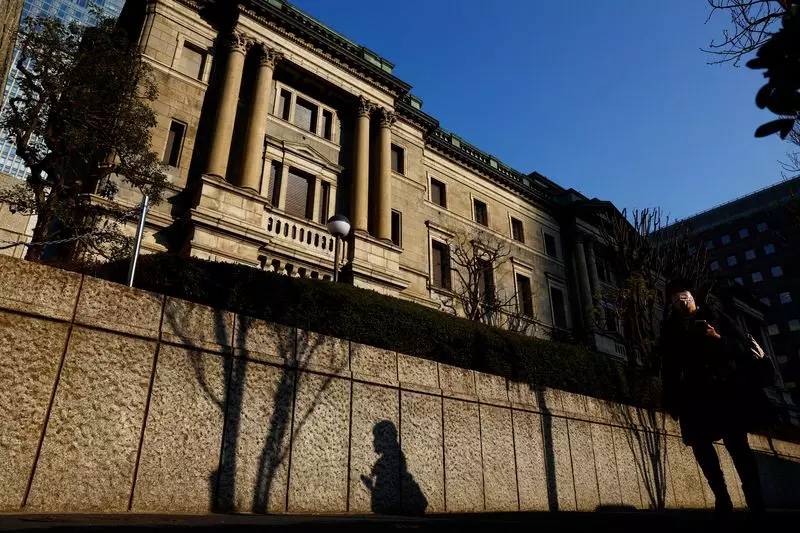In a notable policy shift, the Bank of Japan (BOJ) has opted to raise interest rates, marking a significant turn in its longstanding policy framework. This decision stems from a complex interplay of factors, reflecting the BOJ’s struggle to strike a balance between economic growth and the necessity of controlling inflation. The clarity with which the BOJ signaled this shift stands in stark contrast to its previous floundering communications, underscoring the challenges the central bank faces in navigating a rapidly changing economic landscape.
Historically, communication has not always been the BOJ’s strong suit. An unexpected decision to maintain low rates in December left investors in disarray, highlighting a need for the central bank to recalibrate its messaging strategy. In contrast, the move to raise rates was accompanied by unusually transparent guidance, demonstrating an effort to avoid further market surprises. Analysts suggest this clarity was influenced by techniques adopted from the U.S. Federal Reserve, which has successfully managed shifts in policy through clear communication.
The newfound clarity in the BOJ’s guidance may be short-lived, as central bank officials express concerns about becoming overly reliant on the market’s behavior. This hesitation stems from a lack of confidence in the optimum interest rate, termed the “Goldilocks” rate—one that neither stifles economic growth nor leads to rampant inflation. As the global economic climate becomes increasingly unpredictable, the BOJ’s policymakers are faced with the difficult task of formulating responses that are robust enough to adapt to evolving circumstances without locking themselves into a specific path.
The experience of Governor Kazuo Ueda during his tenure has highlighted the precarious nature of this balancing act. In December, the BOJ’s inability to raise rates despite strong market expectations not only shocked investors but also compelled Ueda to reference external uncertainties, particularly related to U.S. economic policies under the impending Trump administration. This highlights a cautious approach, where the fear of spooking markets acts as a constraint against decisive action.
Furthermore, the BOJ’s advance warnings in the lead-up to the latest rate hike have drawn mixed reactions. While this pre-emptive communication allowed for a smoother transition into heightened interest rates—the highest level seen in 17 years—it raises concerns about how much influence market expectations should hold over central bank actions. Critics argue that such a strategy may inadvertently encourage a focus on communication over substantive economic indicators, thereby weakening the efficacy of policy decisions.
Central to the ongoing debate surrounding BOJ policies is the challenge of accurately identifying the nominal neutral interest rate, estimated between 1% and 2.5%. As the BOJ adjusts its rates closer to this target, it faces an inherent uncertainty about whether these actions will appropriately balance economic growth against inflationary pressures. The lack of definitive guidance on future increases reflects the discomfort among policymakers regarding where they stand in relation to this crucial neutral rate.
The existing practice of evaluating economic conditions several months post-rate change complicates matters further. As analysts like Izuru Kato from Totan Research point out, this retrospective approach to assessing the implications of interest rate hikes can slow down the central bank’s ability to respond to imminent economic shifts. Each rate change becomes less a signal of confidence and more a cautious measure weighed down by uncertainty.
Broader Challenges Ahead
As the BOJ forges ahead with the prospect of additional interest rate hikes, it faces mounting hurdles in justifying these decisions to the general public. Although policymakers reference the necessity of addressing wage growth in their rationale, there remains skepticism about the sustainability of consumer spending amid rising living costs and potential foreign economic shocks, such as Trump’s proposed tariffs.
The confluence of these challenges raises the stakes for the BOJ, as it seeks not just to manage domestic inflation but also to maintain essential support for growth within Japan’s export-driven economy. Frederic Neumann, chief Asia economist at HSBC Bank, emphasizes the complexity of the BOJ’s current position, noting that the intricate task of balancing various economic pressures showcases the precarious nature of the path ahead.
While the BOJ’s recent rate hike signifies a step towards tightening monetary policy, it embodies a broader narrative of uncertainty and cautious navigation in policymaking. The issues surrounding communication, the identification of neutral rates, and the intricate dynamics of global economic interactions present ongoing challenges that will require careful consideration as Japan moves forward in a complex economic environment.

